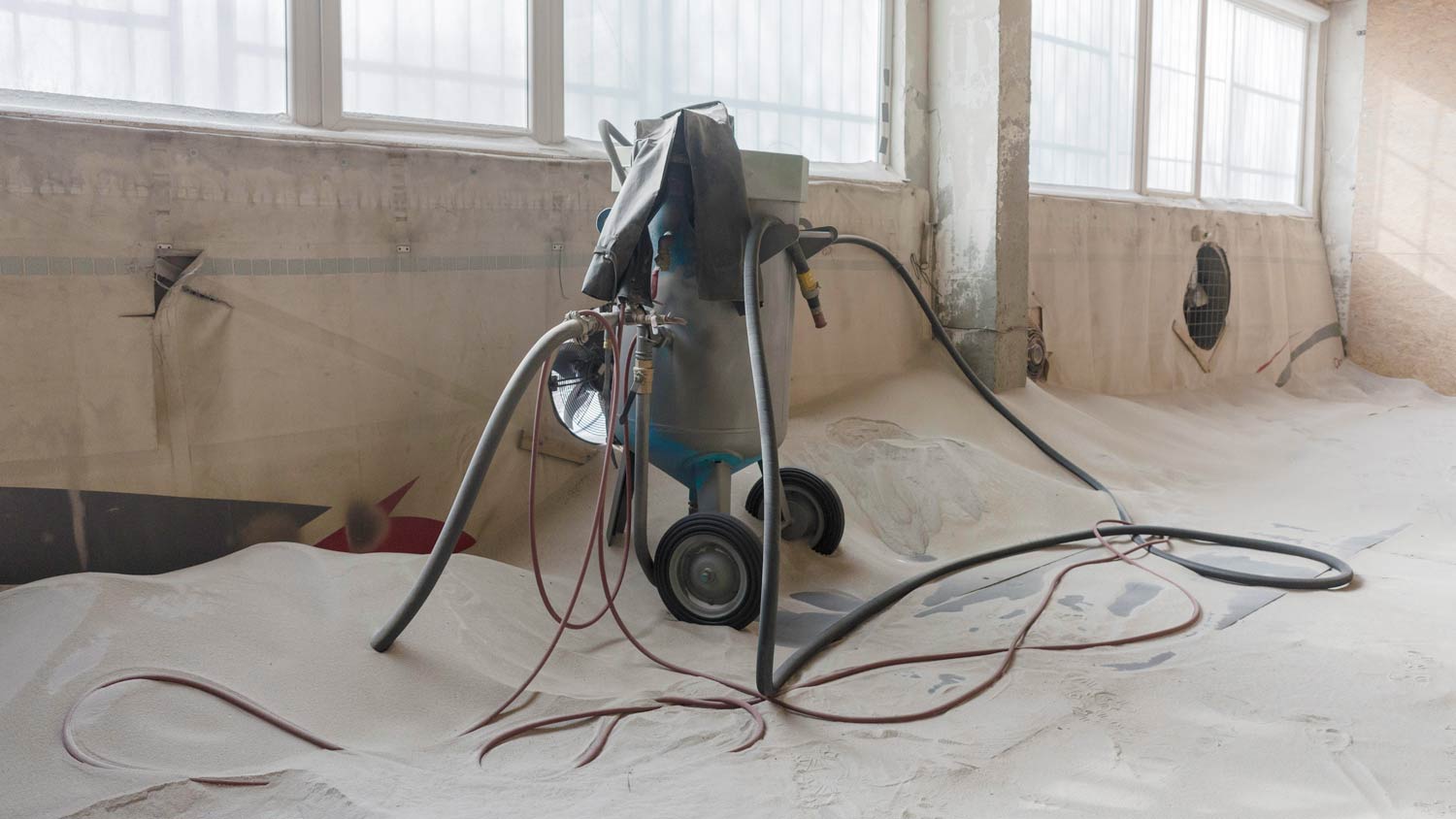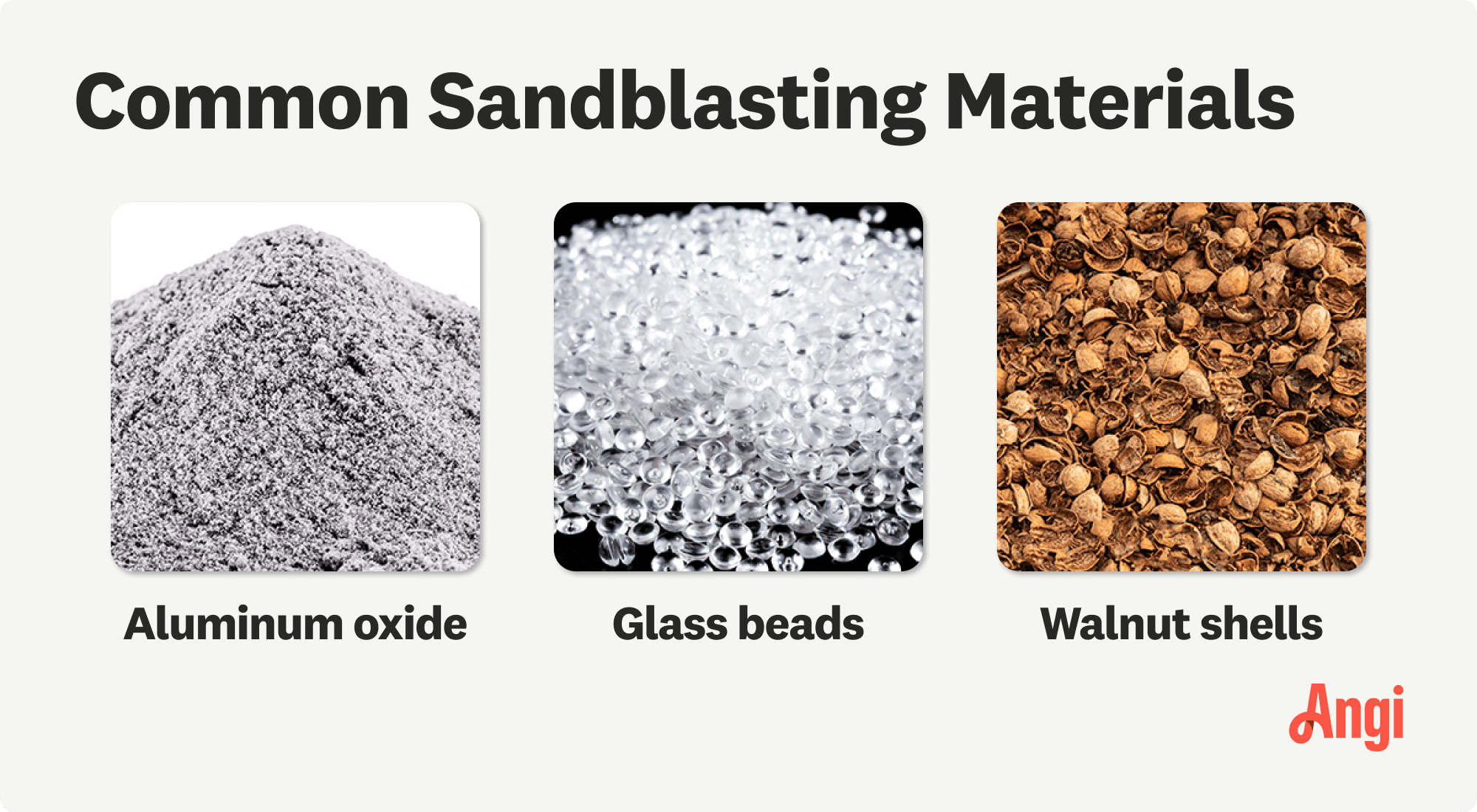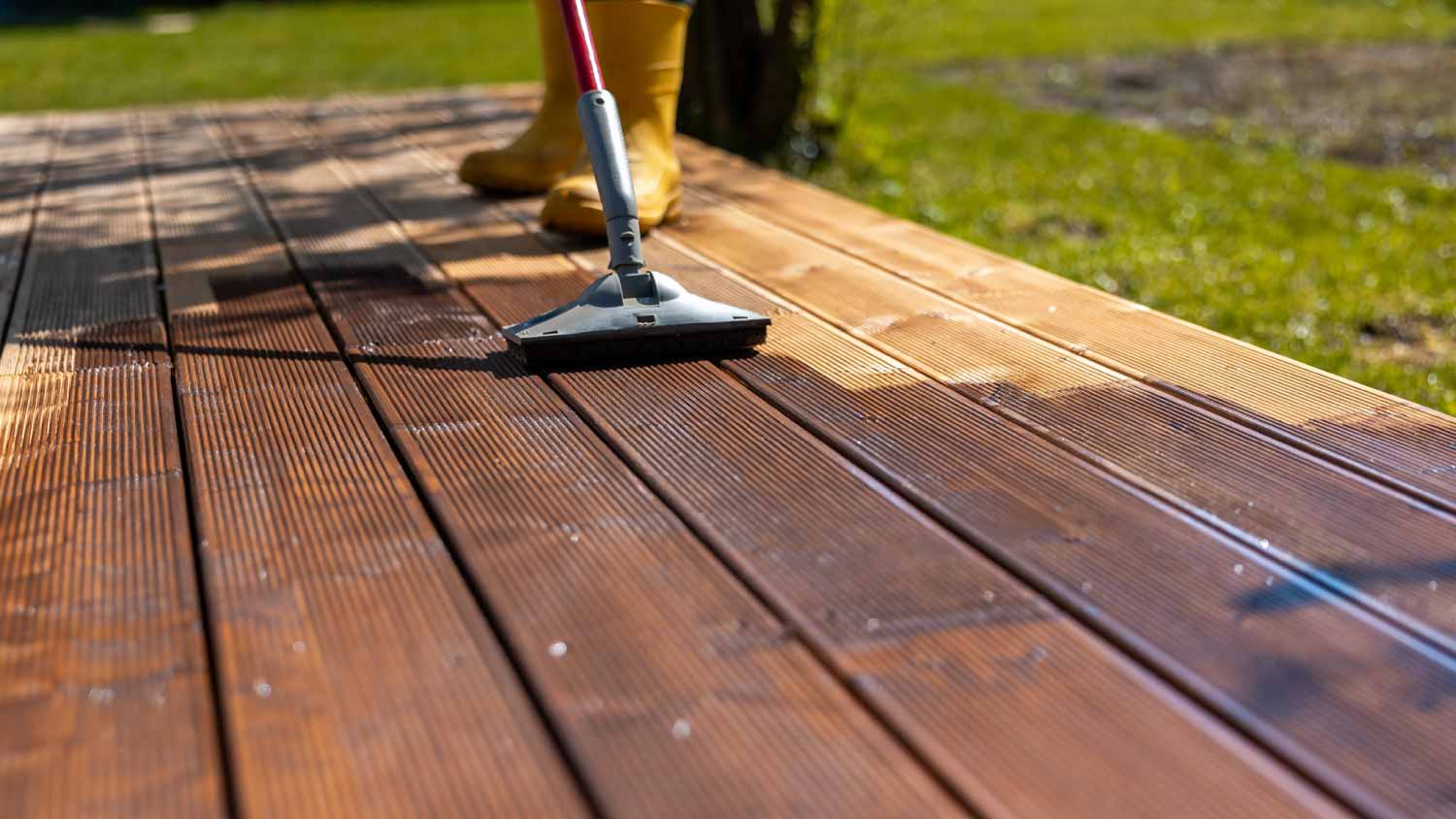
The cost to paint a stucco house depends on its size, the type of paint used, and any required repairs. This guide will help you budget for the painting project.
The average cost to rent a sandblaster is $200 but this can range from $70 to $1,400, depending on the rental length.


Renting a standard sandblaster for a half day costs $70 to $230, while a week costs $200 to $570.
Sandblasters use various materials, and aluminum oxide costs $2 to $2.50 per pound while sand silica costs $1.50 to $1.80 per pound.
A sandblast hood accessory costs $10 per day to rent and an air compressor costs around $55 per day to rent.
Pros charge around $3,200 for a sandblasting job that covers 1,000 square feet.
A sandblaster is a powerful cleaning tool you can rent for $70 to $1,400, depending on your project’s scope. $200 is the average cost to rent a sandblaster with a 200-pound pot for one day. Sandblasting can remove the toughest materials from hard surfaces, but the risk involved often makes hiring a professional service more appealing than DIY.

The biggest factors affecting sandblaster rental costs are the rental period's length and the machine's size.
| Rental Period | Cost |
|---|---|
| Half-day | $70–$230 |
| Full-day | $75–$350 |
| Weekly | $200–$570 |
| Monthly | $500–$1,400 |
As with any equipment rental, expect to pay more the longer you hold onto your sandblaster. Rental equipment providers offer flat rates for standard periods like a half-day, full-day, week, or month. Half-day periods can vary between companies but are typically three or four hours long.
Consider how long your project will take when you compare prices to ensure you stay within your budget.
Sandblasters are available in a variety of sizes suited to different project types. The size of the pot, or sandblasting pressure vessel, is measured in pounds of abrasive capacity. For example, the most common pot size for sandblasting tasks is 200 pounds, which holds up to 200 pounds of abrasive.
The larger your pot, the less often you’ll pause your work to refill it. This is particularly important when sandblasting structures or items with a lot of surface area. A larger pot is also less portable. Additional portability may be useful when working on multiple projects across the property.

Sandblasters use various materials. Although sand silica is the traditional material for sandblasting, it’s associated with health risks, including respiratory problems due to exposure to airborne particles. This risk has led to other sandblasting materials, called media, increasing their market share.
Several factors will influence which media you choose for your sandblasting project, but the surface you clean will be a top consideration. Certain media are better suited to cleaning more delicate materials, while others are more abrasive for tougher projects. When you purchase bags of sandblasting media for your project, expect costs to vary by type.
We break down the most common sandblasting media, their uses, and the average cost per pound below.
| Sandblasting Medium | Average Cost (per Pound) |
|---|---|
| Corn cobs | $0.80–$1 |
| Sand silica | $1.50–$1.80 |
| Baking soda | $1.50–$2.50 |
| Glass bead | $1.50–$2.50 |
| Aluminum oxide | $2–$2.50 |
| Steel grit | $2–$2.50 |
| Walnut hulls | $2–$3 |
| Pumice | $2.50–$3.50 |
| Silicon carbide | $4–$4.50 |
| Acrylic sand | $4–$4.50 |
| Copper slag | $4–$5 |
Ground corn cobs are a woody waste material left over from processing corn. They cost $0.80 to $1 per pound and are an environmentally friendly blasting media best suited to cleaning wooden home exteriors and other soft or delicate surfaces. Despite a lower cost per pound, you may use more corn cobs to accomplish one task than you would other media.
Sand silica is the traditional blasting medium from which sandblasting gets its name. At $1.50 to $1.80 per pound, sand silica is an affordable medium that cleans surfaces efficiently and is strong enough to remove exterior paint or graffiti from brick. However, be sure to use proper technique and wear full protective gear to avoid harming your lungs, eyes, nose, and skin.
Baking soda, also called blasting soda, is another more delicate material that has been used longer than most other types of blasting media. You can purchase large bags of blasting soda for $1.50 to $2.50 per pound.
Glass beads are much safer than traditional sand since they contain no harmful lead or silica. They fulfill many of the same purposes, such as stripping vehicle bodies to create a smooth, bright finish. You can purchase glass beads for $1.50 to $2.50 per pound.
Aluminum oxide costs $2 to $2.50 per pound. It is a common blast medium for cleaning glass, granite, marble, and steel. However, you should never use aluminum oxide on soft or delicate surfaces.
You can purchase steel grit for $2 to $2.50 per pound. This highly abrasive blast medium is ideal for cleaning and stripping paint, primer, and other materials from metal surfaces. It is also highly recyclable.
Walnut hulls are a soft, organic blast medium that costs $2 to $3 per pound. Composed of crushed walnut shells, they’re ideal for cleaning softer surfaces such as fiberglass, wood, plastic, stone, and certain metals.
Pumice is a type of mineral that resembles foam. It has a sponge-like structure with very low density, granting it a moderate abrasiveness ideal for cutting through rust, scale, and other coatings found on wood, metal, and plastic surfaces. You can purchase pumice for $2.50 to $3.50 per pound.
Silicon carbide is the hardest abrasive blasting medium available, making it highly effective for some of the most challenging sandblasting jobs. It’s also among the most expensive media at $4 to $4.50 per pound, but it makes up for this relatively steep price point by being reusable.
Acrylic sandblasting media costs $4 to $4.50 per pound. Also called plastic abrasive grit, it’s a gentler media that’s best for removing mold, anti-corrosion coatings, waxes, sealants, and adhesives from soft or delicate surfaces.
Copper slag is a byproduct from copper smelting processes that costs $4 to $5 per pound. It’s a very efficient cleaning material that produces lower dust levels than most blast media. It is a popular choice for blasting clean brick and other masonry, but it poses health risks to users similar to traditional sand silica.
If you rent a sandblaster, you’ll need other equipment for it to function properly. Your rental provider should provide a sandblast hose fitted for your machine. They should advise you on the proper size of air compressor and nozzle for your project needs.
Air compressor: $55 per day rental or $90 to $200 purchase
Sandblast hood: $10 per day rental

Sandblasters are available to rent for your DIY cleaning projects. Renting a sandblaster for the day only costs $200, while the cost of sandblasting by a professional service costs $3,200 for the average job.
However, it’s worth noting that sandblasting is an extremely difficult project that can cause serious damage to your home and other property if done without the proper skills and experience. On top of that, traditional sandblasting materials can pose a significant health risk if inhaled or make contact with your skin or face.
To avoid personal injury and property damage, hire a sandblasting service near you. Depending on the project you’re undertaking, you may also be able to DIY a different cleaning method, such as pressure washing.
From average costs to expert advice, get all the answers you need to get your job done.

The cost to paint a stucco house depends on its size, the type of paint used, and any required repairs. This guide will help you budget for the painting project.

Painting your gutters can give your home the fresh finishing touch it needs to look its best. This guide walks you through the cost to paint gutters.

The cost to paint vinyl siding depends on the type of paint, square footage, labor, and more. Check out this guide to help you budget for painting vinyl siding.

Whether you opt for low-luster or high-gloss depends on budget, skill, aesthetics, and material. Learn how to pick the best sheen for exterior paint projects.

If your painted deck is less than appealing, it's time for a refresh. DIY your paint removal from your deck to enjoy your outdoor space for many seasons.

How much stain do I need for my deck? It’s one of the most important parts of any deck revival project. Here’s how to calculate what you need.